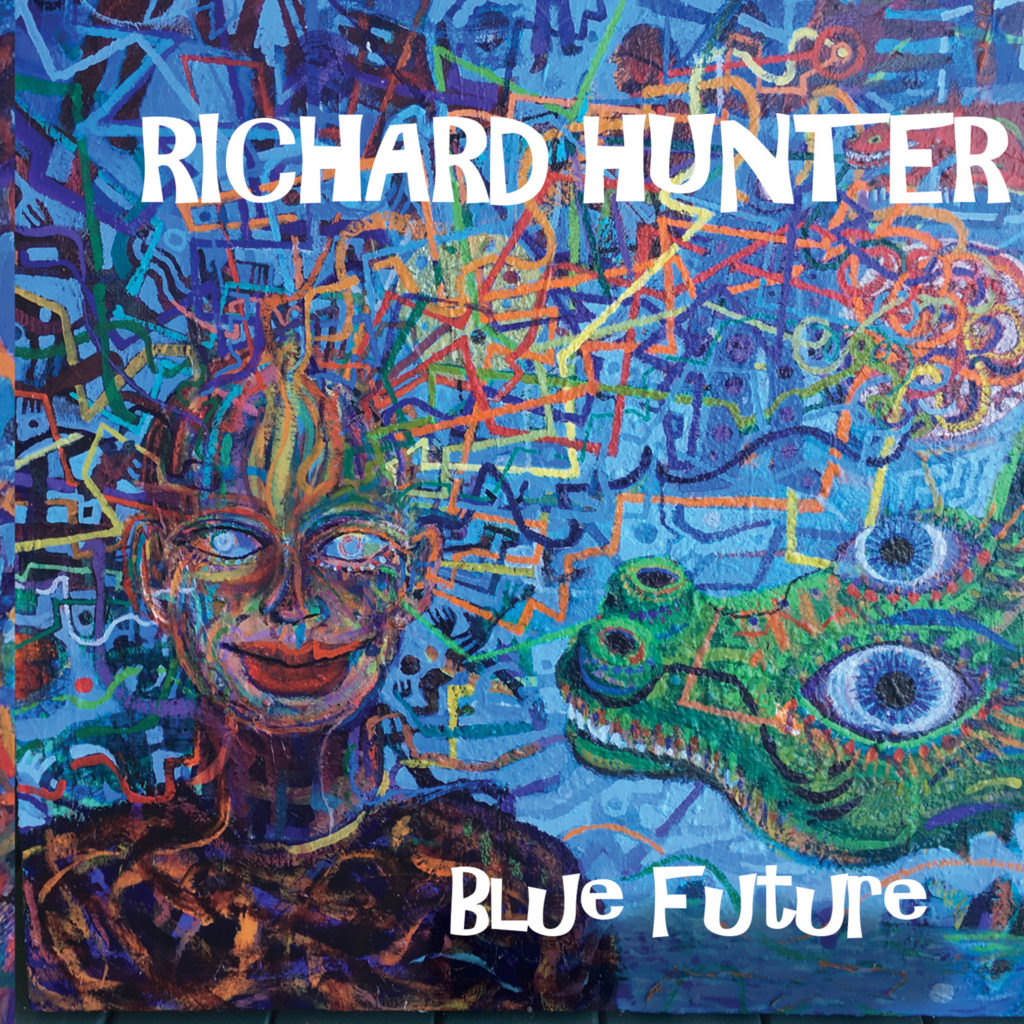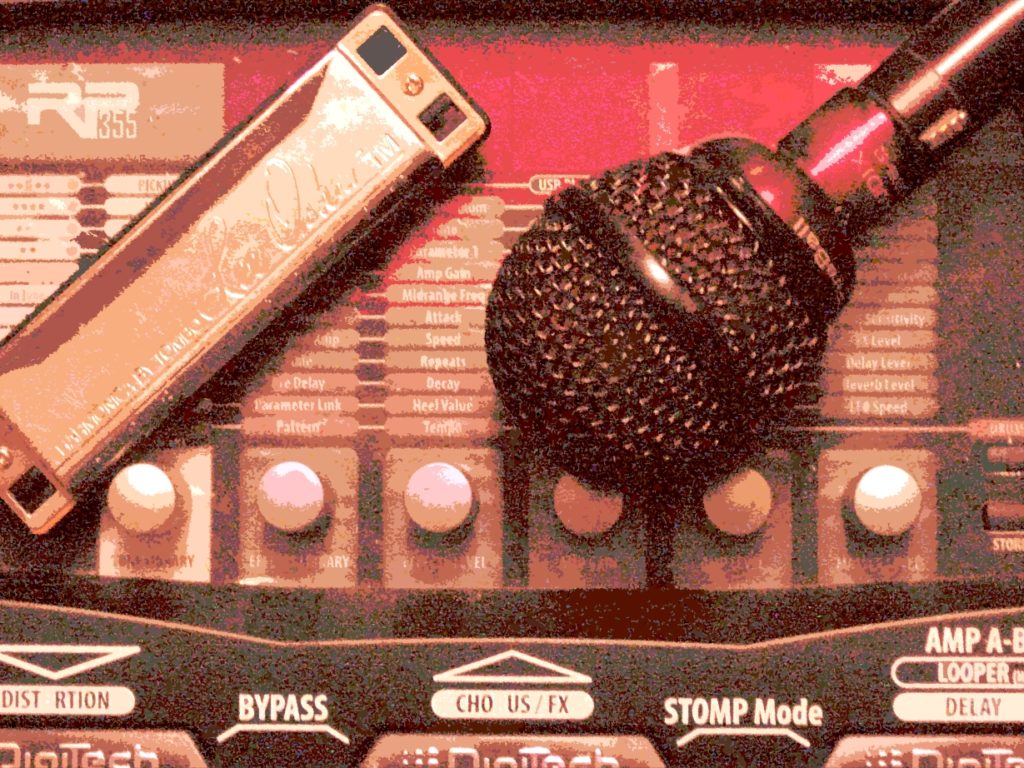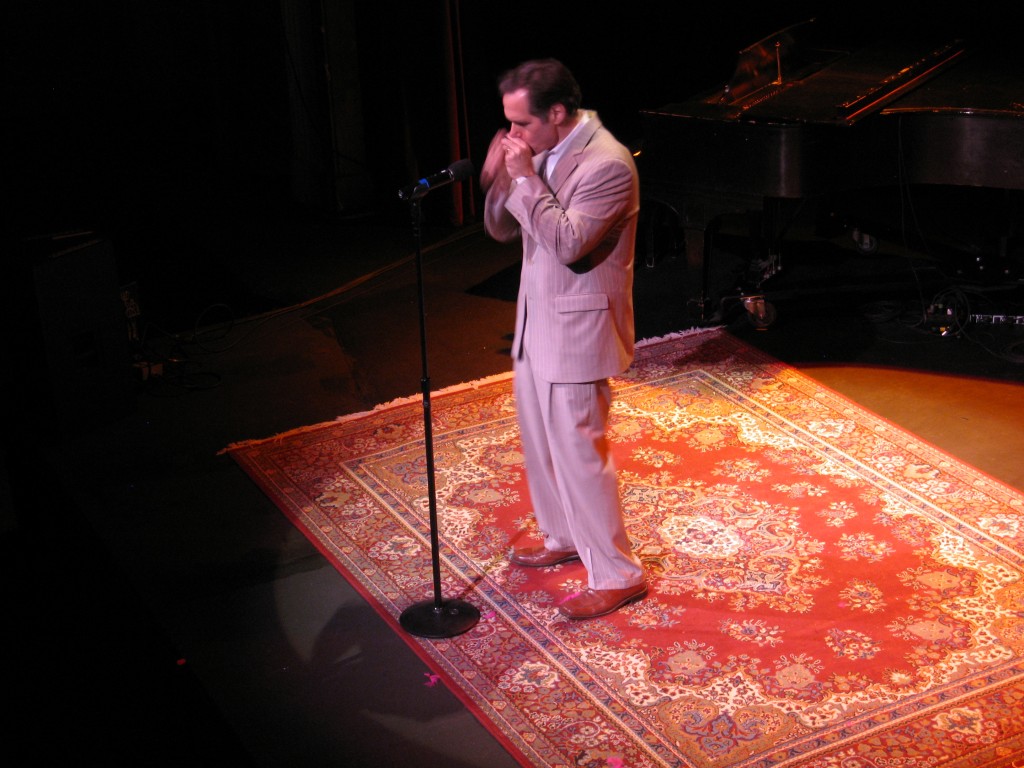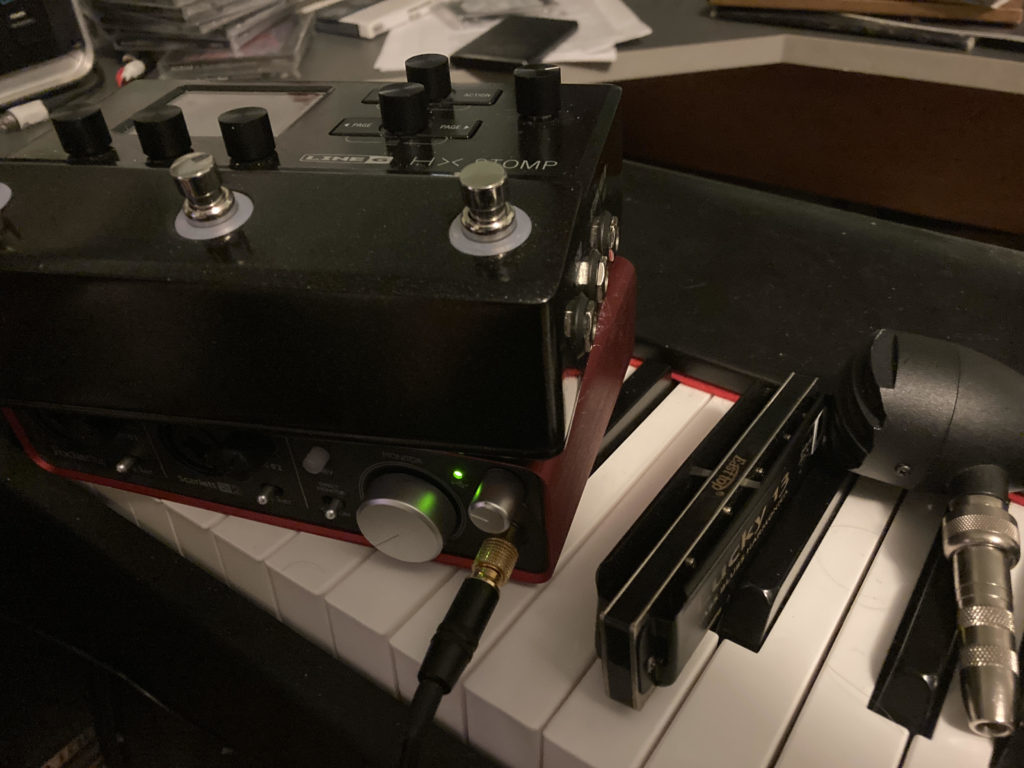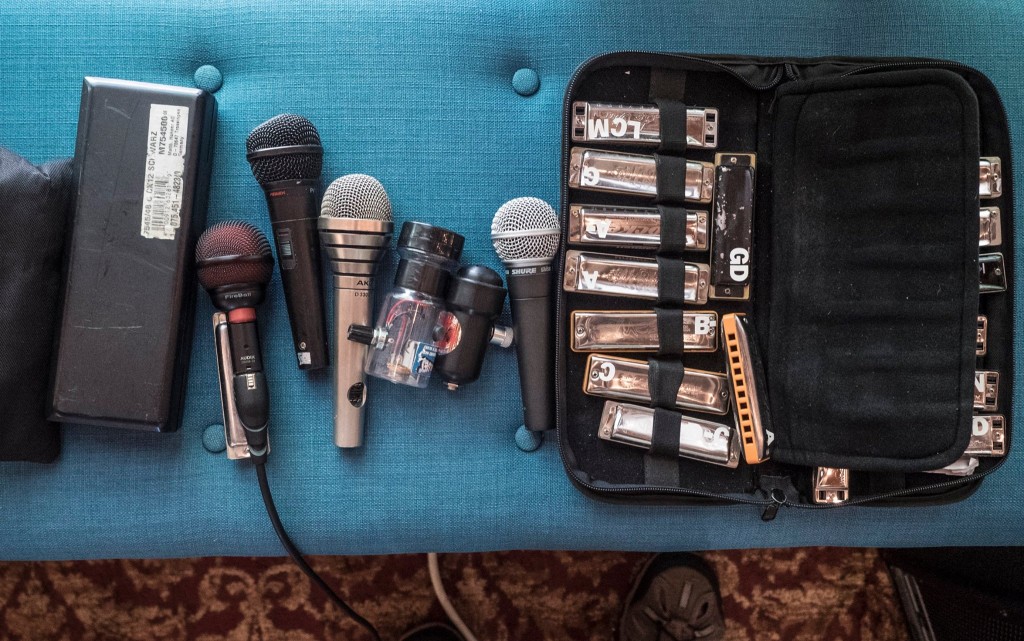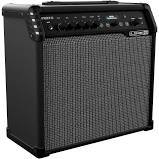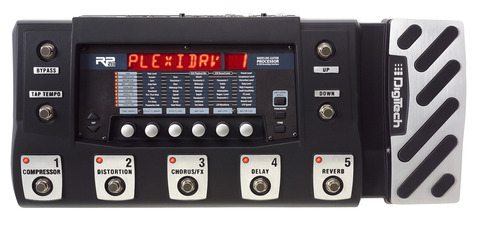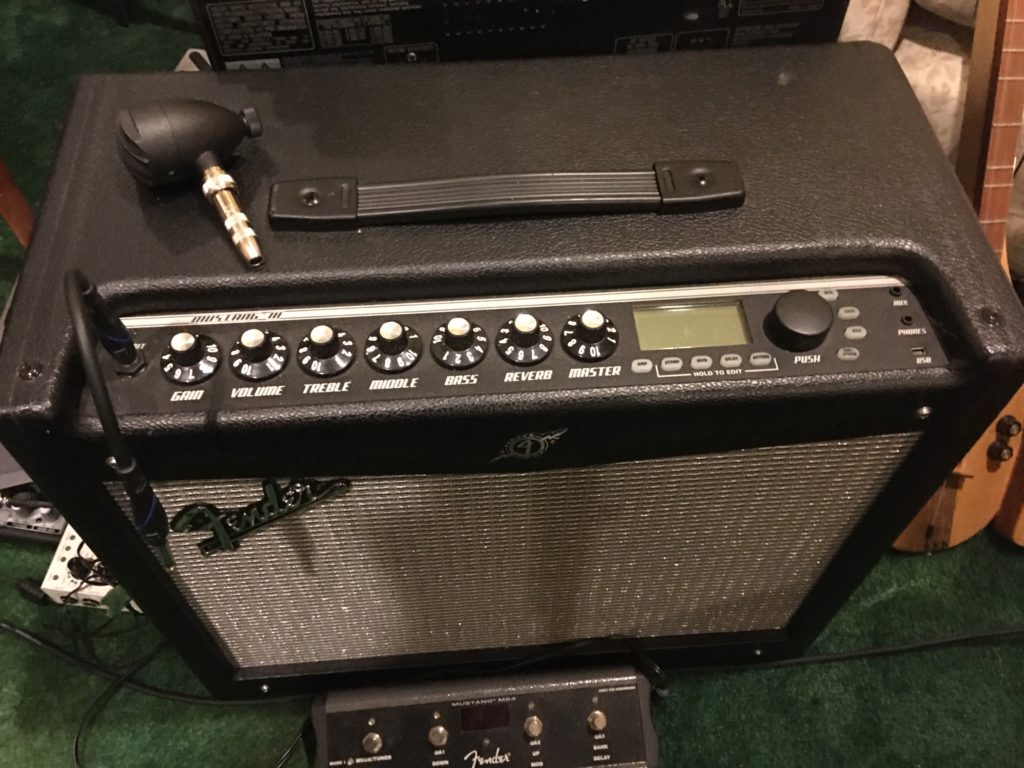“On the Road Again” live
“Disconnected Blues” live
“Tales of Brave Ulysses” live
Electric Harp Looping and Improvising, May 2021
In the last few weeks I’ve done a bunch of looping, working on stuff with beatbox, synth bass, and two harp parts. More than two starts to lose its tough. Amyway, I like where this iss going. See if you do too. “G Minor Ostinato…
Improvised Harmonica Solos, May 2021
I improvised solo pieces for close to half an hour with a Kongsheng Bluebird harmonica a week or so ago. I liked it when I heard the recording, so here’s the entire session, start to finish. The pieces ae all improvised. Enjoy.
Two chunks of “The Thing You Love”
Check out the harp solo and harp outtro from my new piece “The Thing You Love”. Notes: “The Thing You Love” by Richard Hunter. Harmonica recorded May 1 2021. Lucky 13 harmonica in D, played in second position (Dorian) minor. Signal chain includes a Bulletini…
Stay tuned for the comb tests!
I posted to Facebook a couple of weeks ago about my experiences with different comb materials on my diatonics. Not long after, and based in part on my experience with metal and aluminum combed harps, I ordered a few brass and acrylic combs from Tom…
The Line 6 Spider V Patchset Is Almost Ready For Release
In the last few weeks we’ve put some of the finishing touches on our patchset for the Line 6 Spider V series amps. I designed this patchset using a Bulletini mic for input, so it’s a very blues-friendly set. I’ve used a variety of amp…
Richard Hunter and Brian Ready at The Acoustic, March 9 2020
Fender Drops Support for Fender FUSE, But the Software Is Still Available
Fender has announced that as of March 20 2020 they have dropped support for Fender FUSE software, meaning for computer support for the Mustang I-V series amplifiers. However, Fender Consumer Relations has advised at least one customer that the software can still be downloaded from…
WHAT’S NEW
Categories
- Audio/Video
- Blog
- Blue Future
- Digitech RP Tricks and Tips
- Discography, CDs, Projects, Info, Notes
- Featured Video
- For the Beginner
- Gallery
- Hunter's Effects
- Hunter's Music
- Huntersounds for Fender Mustang
- Meet the Pros
- More Video
- MPH: Maw/Preston/Hunter
- My Three Big Contributions
- Player's Resources
- Pro Tips & Techniques
- Recommended Artists & Recordings
- Recommended Gear
- Recorded Performances
- Reviews, Interviews, Testimonials
- The Lucky One
- Uncategorized
- Upcoming Performances
- Zoom G3 Tips and Tricks
